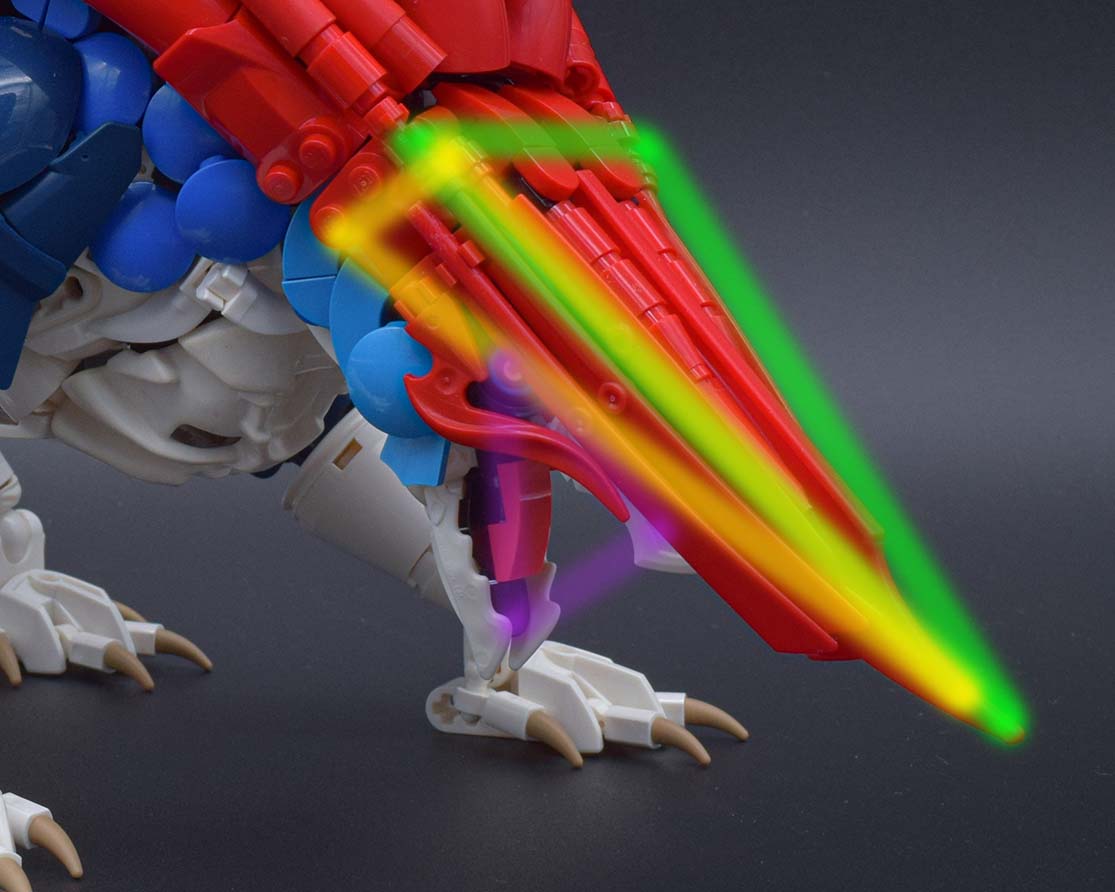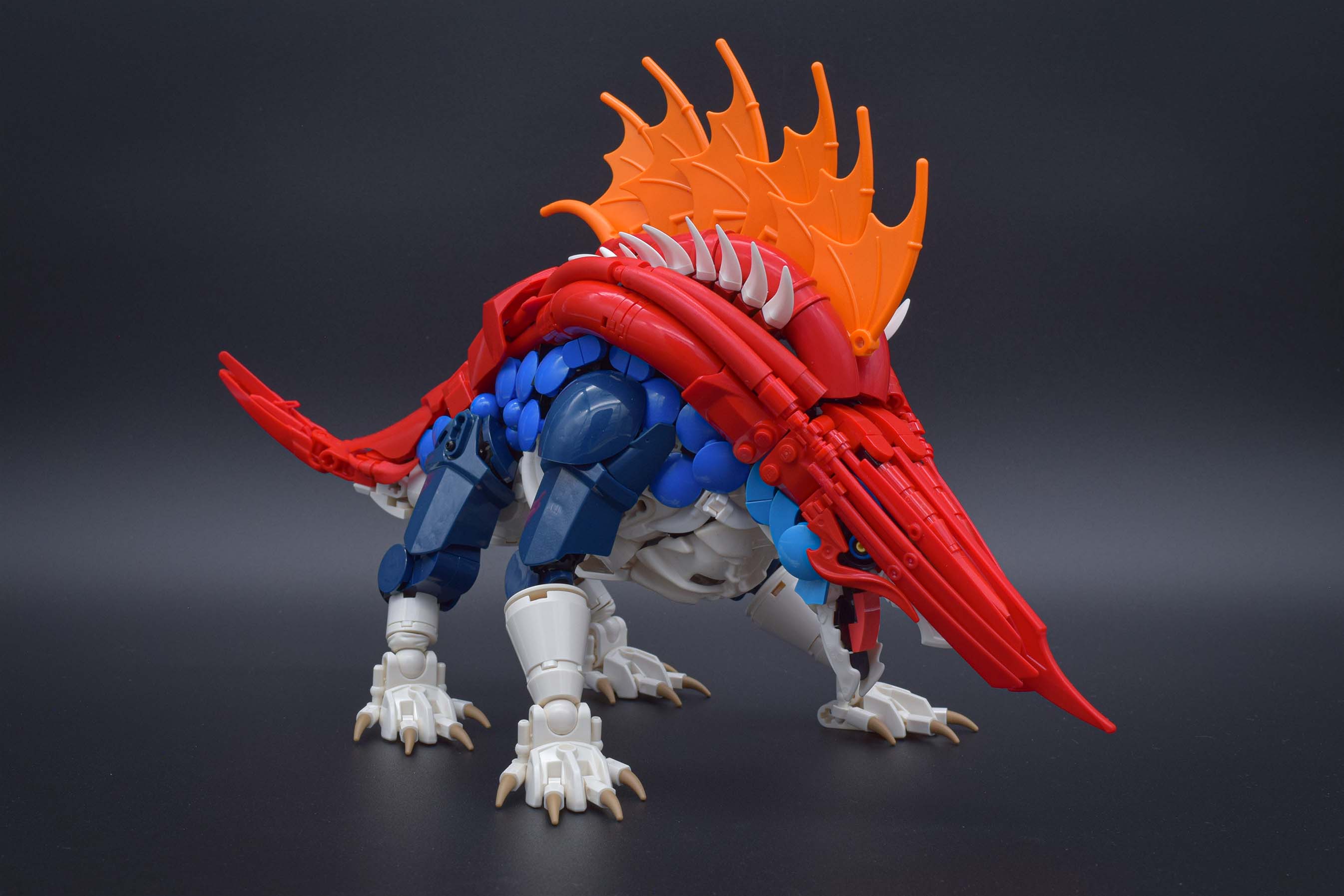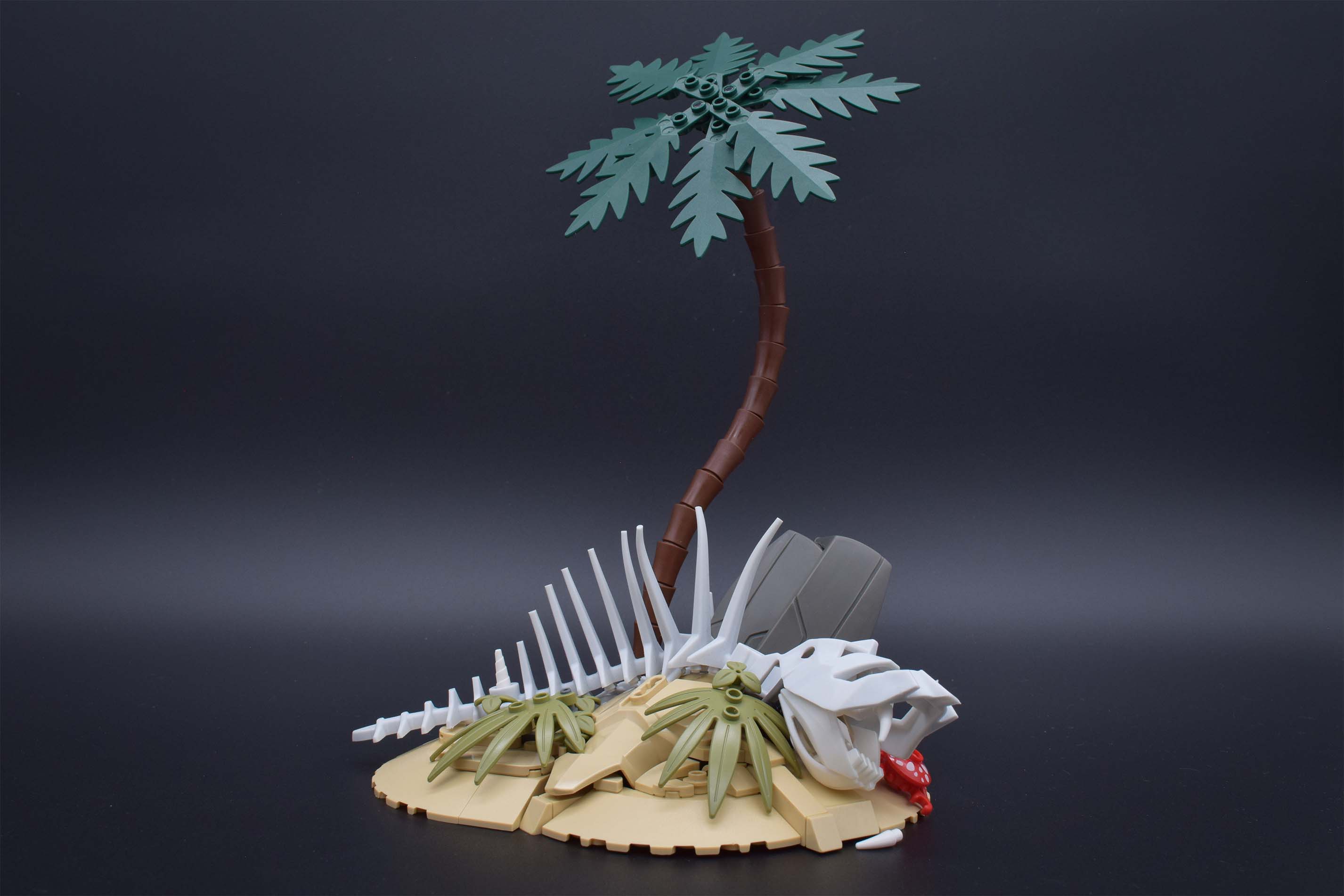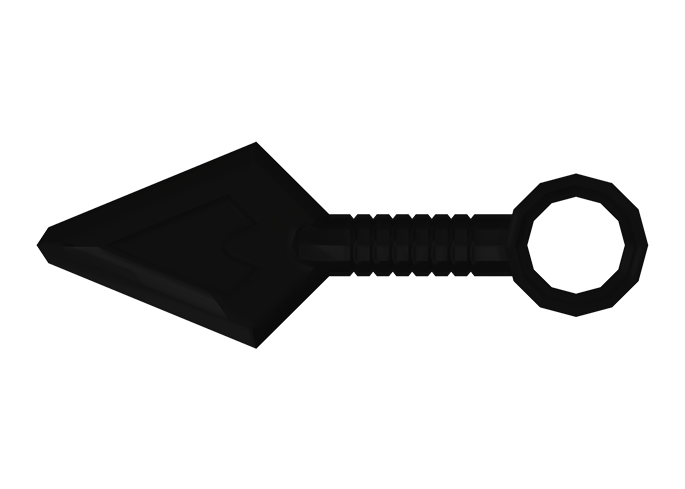Vermilion Sand Beast

For Bio-Cup round 3, I was placed in the Carnivore sub-theme with “Feeding Strategy” as the overarching theme. Seeing as the theme was quite vague, I decided that this would be the round to really try making a creature from scratch. Whereas the last two rounds I had relied pretty heavily on existing art, I decided to take the helm in designing this monster.
To begin, I asked, “what design feature or features make a carnivore?”. Typically, it has to have some sort of method to kill its prey. Using this as the baseline, I looked up a few apex predators and thought that a shark design would be neat. As I dug deeper, I eventually settled on a mix between a shark and a swordfish - in case the teeth weren’t enough to convey its killing method, then surely the sword snout would.
As I built the head, I tried to focus on triangular shape language to further convey danger. I layered propeller blades and had them converge toward a large figure sword for the snout. The full eye assembly is hidden under these blades, and an energy effect wisp helps create a sharp, triangular shaping around the eye. Lastly, another triangle is formed between the upper and lower jaw, and the lower jaw uses bent pirate swords as teeth. Below is a picture of some of the triangular shapes in the head.

Admittedly, I was going to make an aquatic creature; however, this plan soon fell apart when I got to working with colors. I had already included dark azure into the palette with the head design, and orange being its complementary color felt right as the fins. However, the dragon wings only appear in orange in the smallest size, and building non-system fins at an appropriate scale to this monster proved quite difficult. With this problem, I decided to pivot to a land-based creature, but still try to retain some of the aquatic features. It’s a good thing that all life stems from underwater creatures…
When designing the torso, I continued the blue accent established from the head design. I decided to switch to regular blue because I mainly didn’t have enough dark azure. This however presented another problem when it came time to designing the limbs. The regular blue on the limbs was way too bright, and I already had a lot of high saturation colors from the red and orange. I decided then to make the limbs dark blue, thus creating a color gradient for the blues. In addition to being more coherent, the limbs in dark blue felt like they toned down the regular blue in the torso. For the underbody, I yet again used another Nuva recolor - this time the Pakari Nuva in white. The curves on the top of the mask blend right into some rib details, which are unfortunately kind of hidden from view in the main photo, but somewhat viewable in the single shot. I guess it’s just something you’ll have to see for yourself at a convention. I finished off the creature by designing a sharp tail to further contribute to the shape language of the overall monster. There was some internal debate on whether to have orange fins there instead, but the red tail felt more appropriate.

Now onto some scenery. From what I’ve learned in Bio-Cup, assume the judges are dumb - just kidding, but really assume the audience knows absolutely nothing about the build. Though I had incorporated threatening features in the design of the creature, I wanted to drive home the carnivore theme. To do this, I decided to create a scenery piece that had some sort of animal skeleton. Keeping with the aquatic theming, I made a sandy, beach-like environment. To do this, I included some rounder rocks that would appear to have been eroded by the water. The actual parts used for the rocks are from a disassembled Galidor TDN Module. They’re not listed on Bricklink as you have to use a screwdriver to remove them; this is Bio-Cup legal as it is reversible. And since this is a Bio-Cup model after all, I used a Thok Piraka spine as the animal skeleton. It was a bit of pain to hide the arm portions of the piece, but by doing so, the part gave off the perfect animal skeleton look. Lastly, I added a palm tree to balance out the visual space. All of the scenery components use muted colors to really allow the creatures that are alive to shine - both the monster and the crab (hi Alex). In addition, I added in a system base to tie together the model. Hopefully that isn’t what kills my Bio-Cup run this year, but I’ve found that character and creature builds have so much more presence (especially at conventions) with a base.

This build was a bit of a departure from the first two rounds as previously stated, but it really allowed me to practice general creature design. Shape language wasn’t necessarily something I consciously thought about in the previous rounds, especially with the reliance on pre-existing concepts and artwork, but by working from scratch, I was really forced to consider it. Hopefully this MOC will be the golden ticket to the finals, but if not, I still had a lot of fun with it and learned a good bit.
